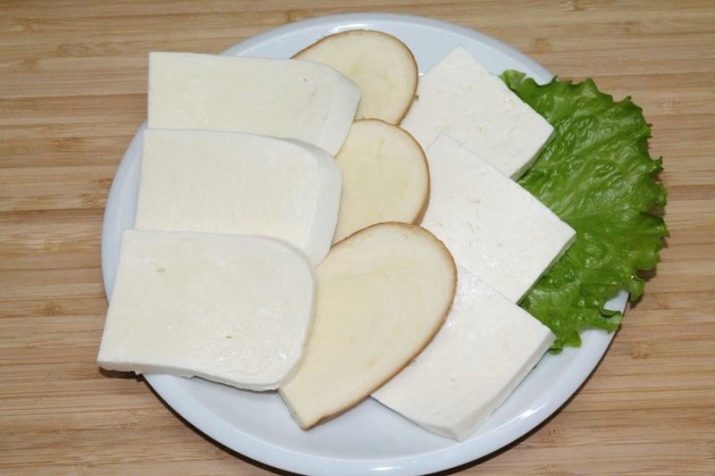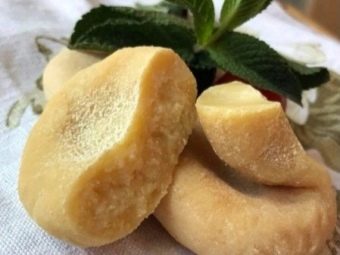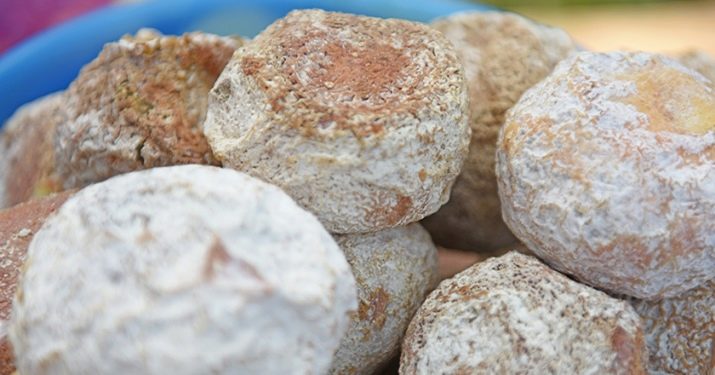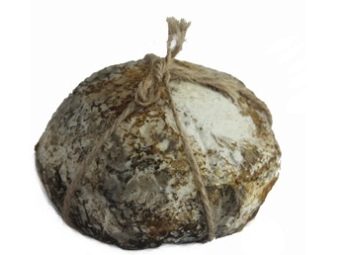Georgian cheese: popular species and their description
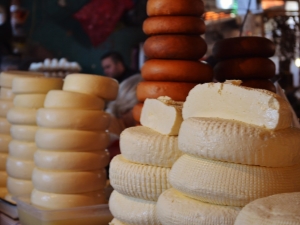
Georgia is famous primarily for its wine and a variety of meat dishes. However, Georgian cuisine is unthinkable without a huge variety of cheeses, which are used to create well-known dishes, such as hominy and khachapuri.In this Caucasian country, many different varieties are produced with a delicate taste and a rich history, so you should consider the popular types of Georgian cheese and their description.
Special features
In Georgian, cheese is called kveli (ყველი). Many Georgian varieties are of the type of pickled cheeses - which means that they have reduced the fat content and increased the amount of proteins and nutrients.
Another nuance is that in Georgian cuisine, traditionally, cheese is very rarely regarded as an independent dish - it is more often used as a component of other dishes.
Therefore, many varieties from Georgia are well amenable to all kinds of culinary processing - frying, boiling, baking, steeping, rubbing, etc.
Varieties
In modern Georgia It is accepted to allocate 14 basic sorts of cheese:
- Imereti cheese;
- Suluguni (divided into ordinary, Megrelian and Svan);
- Shadows;
- Chogi;
- Kobi;
- Kalti;
- Chechili;
- Licked;
- Nadugi;
- Dampali;
- Dambalhacho;
- Narchvi;
- Good (common and Tushino);
- Georgian cheese.
At the same time, the first two varieties total more than ¾ of production volumes. Consider each type of Georgian cheese in more detail.
Imereti cheese
In Georgian, this variety is called Imerali Kveli. Despite the fact that its recipe comes from Western Georgia (Imereti), it is currently produced in all regions of Georgia and is the most popular in this country. And it is not surprising, because it is traditionally part of the khachapuri.
Imereti cheese from cow's milk is produced, which undergoes first exposure to rennetand then heat treatment and aging in brine. The color of the finished product, depending on the fat content of the raw materials, can vary from the usual white for the brynza to bright shades of yellow.
The variety has a delicate flavor, which makes it possible to recommend it not only as a component of traditional Georgian dishes, but also as an appetizer for red and pink wines. Very good taste Imerali kweli and in combination with fresh vegetables.
Suluguni
This cheese is the second most popular in Georgia itself, and one of the most popular varieties outside it. Like Imeretinsky, this variety comes from Western Georgia, only its other region, Samegrelo. Moreover, Imeruli Kveli is used as a raw material for Suluguni. Fresh Imereti cheese is heated and they begin to be kneaded like dough in order to give the finished product a characteristic layered structure.
After cooling, the product is further soaked in brine for a short time. In some cases, after that it is smoked (it is in this form that Suluguni is usually sold outside of Georgia), however, the Georgians themselves prefer to eat this cheese fresh two days after its preparation. A characteristic feature of Suluguni is its malleability and plasticity; in no case should it crumble or be too hard.
Suluguni goes well with wine and fresh vegetables, and outside of Georgia it is often used as a snack for beer.
Shadows
Outwardly, this variety can not be confused with any other - because it is not sold as usual for other varieties of cheese heads, but only in the form of thin strands of great length, which remotely resemble squid chips or finely chopped cabbage.
This cheese originates from the Samtskhe-Javakheti region, and it is there that it is still mainly produced. Sheep milk is used as a raw material, which undergoes a multistage and complex processing with the use of "Queti" - a special ferment from calf stomachs.
At the final stage of cooking, the cheese matures in the form of threads stuffed in a special pot, which is also called “tailed” (stuffed, stuffed). Even now, due to the complex production technology and unique recipes, this variety is considered very rare and is included in the UNESCO World Heritage List.
Chogi
This cheese is characteristic of Tusheti - a region of northeastern Georgia, and even today it is produced exclusively there. This is due to the fact that the raw material for it can only be milk of Tushin sheep, and collected from July to August. It is during these months that the fat content of milk increases significantly.
The raw material undergoes heat treatment and fermentation, after which the cheese matures in barrels of birch bark and sheep skins.
Cheese has a high protein content (more than 20%), low fat content (less than 25%) and a loose texture.
Recommended for white wine and fresh vegetables.
Kobi
This cheese comes from the alpine region of Kazbegi. It is made from low-fat cow's milk, to which sheep's milk is added. Differs in yellow color, a large number of pores and excellent taste, which is best combined with Kakhetian bread or fresh tandoor pita.
Kalti
This is another exclusively Tushino cheese, which is made from curd mass (nadugi). Usually has the form of small dried balls or cakes. Quite calories, in addition, has antiseptic properties, so traditionally used by shepherds. It goes well with fruits and berries, honey, nuts, dessert wine and beer.
Chechili and Zlechili
These two varieties are actually one, but produced in two different regions (Ajaria and Meskhuri) with slight differences in the recipe. In appearance and texture, they most resemble suluguni - white color is also peculiar to it, and they are usually supplied in the form of braids made of individual threads. Raw materials for production is skim milk of cows.
These cheeses are best served in smoked form, as well as after roasting in butter.
Nadugi
This variety is made from cheese whey by heating and pressing, with the result that it has a delicate cottage cheese texture, white color and a soft, specific taste. In fact, this variety is the Georgian equivalent of ricotta. On its basis, you can cook a variety of pasta, for example, with cocoa or spices. In Georgia Nadugi is often served mixed with mint in envelopes from Suluguni.
Dampali
The name of this variety is translated as "rotten cheese." A characteristic feature of this variety is the presence of a layer of white mold on its heads, under which there is an oil.
In terms of its properties, Dampali resembles the more famous French Camembert, which means it blends well with greens, fruits, nuts, pastries and rose wine.
Dambalhacho
Another unique and rare variety, which is often considered the most expensive of the Georgian cheeses. His recipe comes from the regions of Pshavi and Mtiuleti, and is prepared by placing smoked dried curd cheese balls in special pots in which a thin layer of mold grows on the surface of the cheese. It is usually served with fruit vodka, tea and red wine.
Another common method of consumption is heating along with butter, after which pieces of bread are dipped into cheese.
Narchvi
This variety is originally from Svaneti, where it is made from young cheese of other varieties by pressing and salting in wooden containers under a press. The resulting product has a soft texture and white color and can be used both for spreading on bread, and as an ingredient in first and second courses.
Good
This Tushino variety has a high price and a very specific aroma. In fact, it is an Imereti cheese made from sheep's milk and ripening in a wineskin buried in the ground. The resulting product has a yellow color and high porosity.
Recommended for white wine or different varieties of Georgian bread.
Other gourmet cheeses
In addition to standardized varieties, many Georgian masters produce other varieties, among which the most common varieties are:
- aged in honey, ash or mildew;
- soaked in wine or beer;
- with spices.
On the varieties of Georgian cheeses described in the next video.




